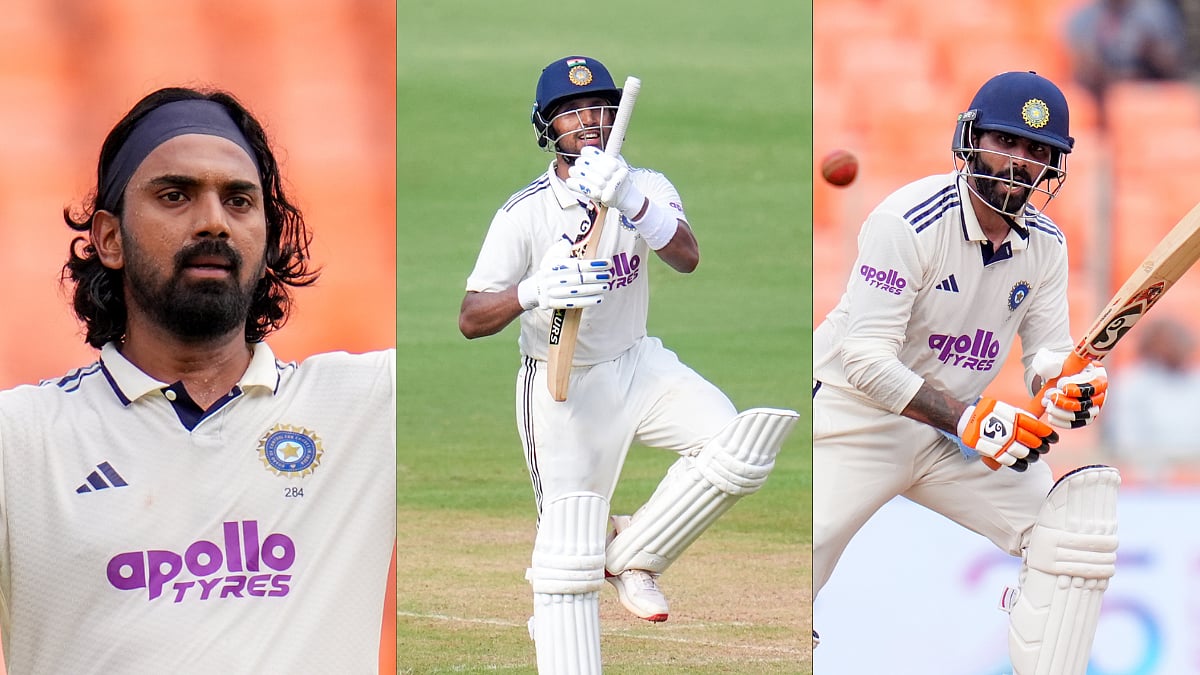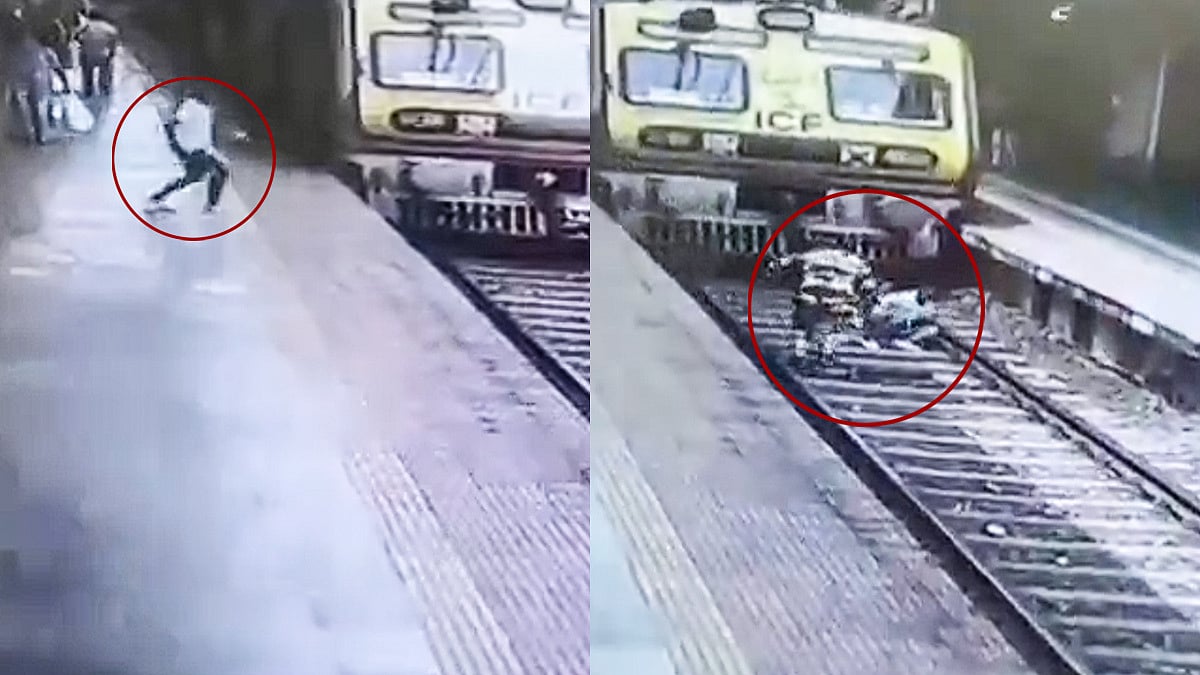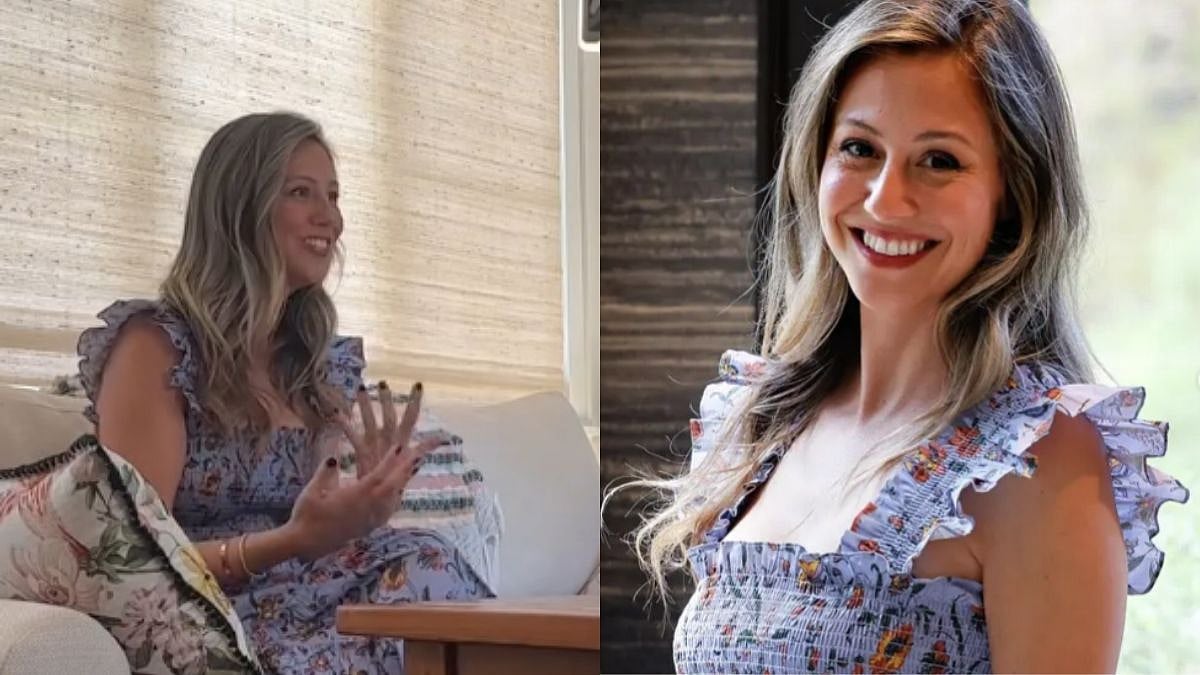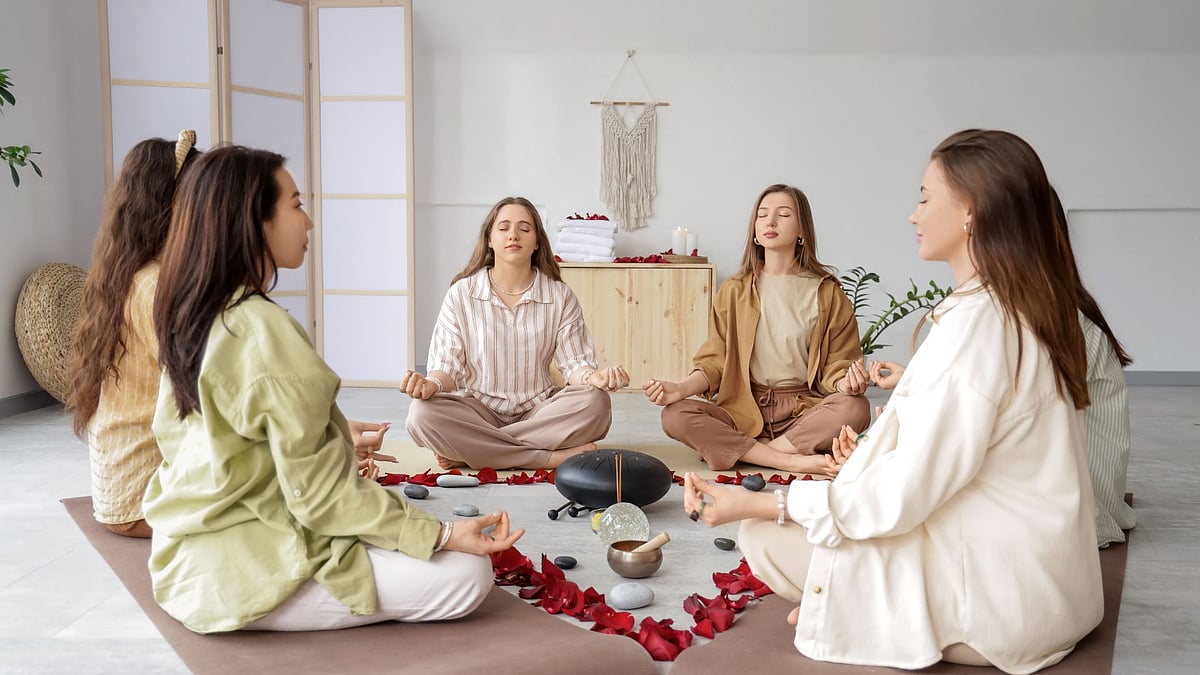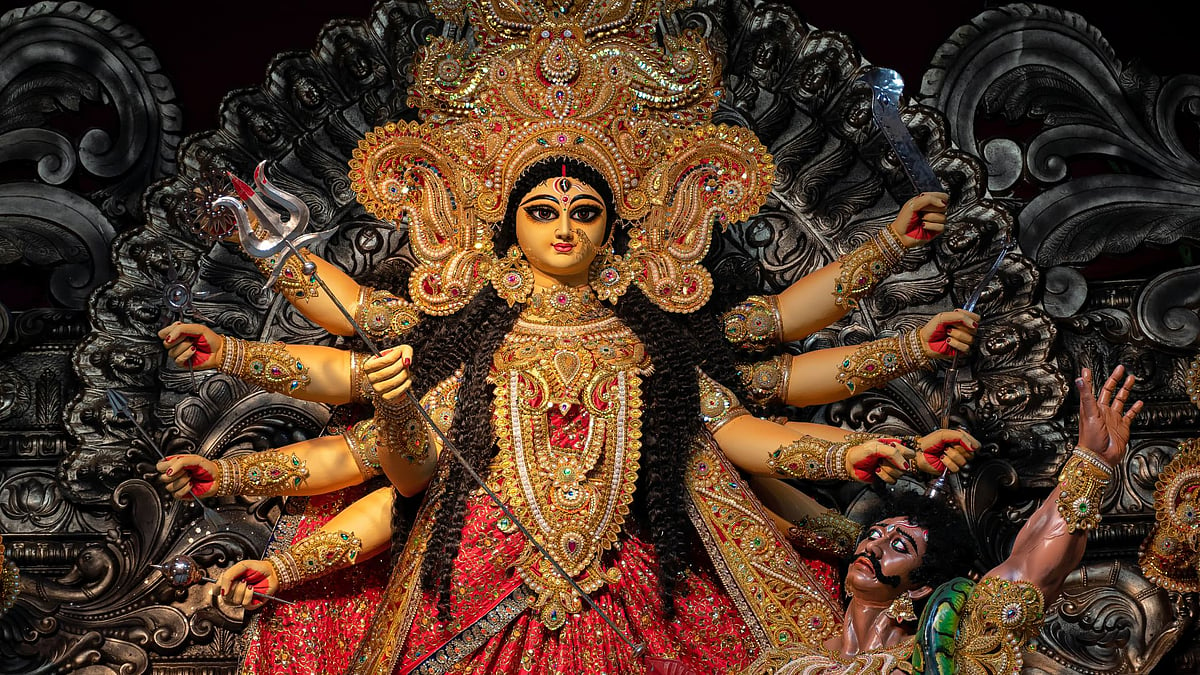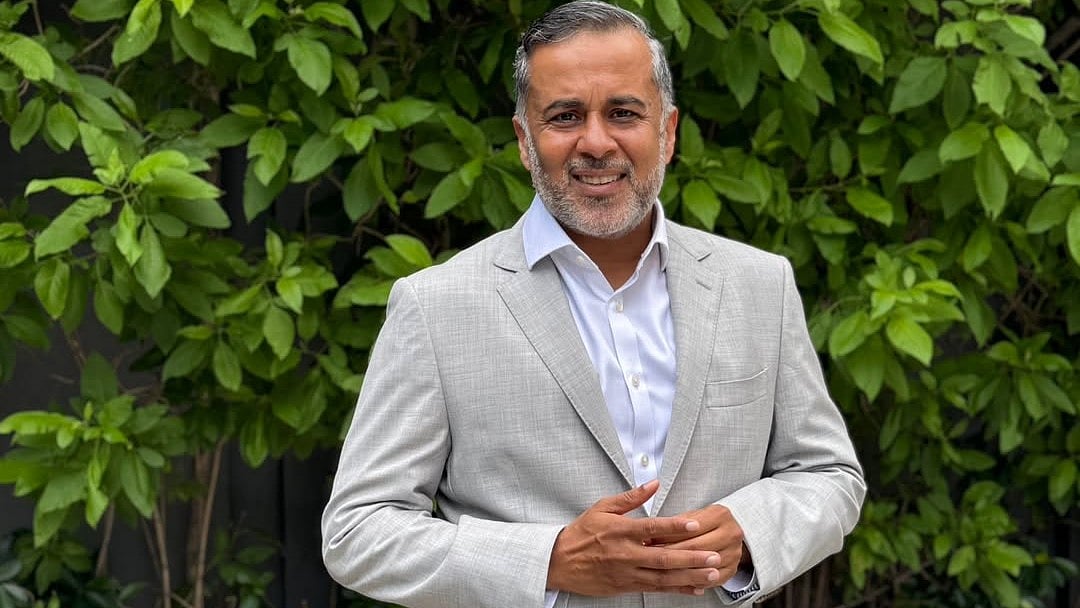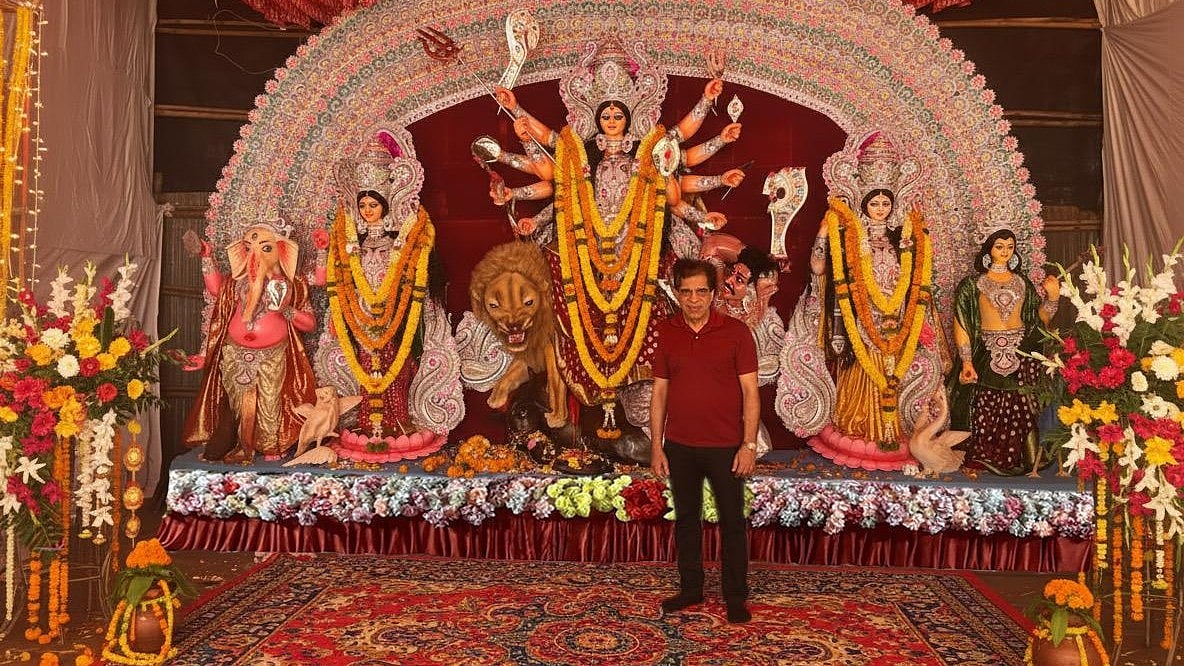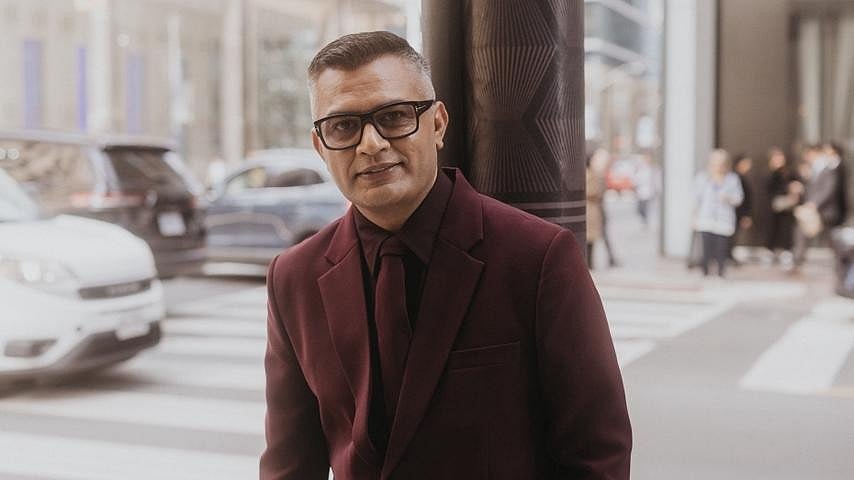Sexagenarian Janardhan Singh Yadav is willing to go the whole hog to be in Ayodhya on the eve of Diwali as the birthplace of Lord Ram will witness a never seen before ‘Aerial Drone Show’ during the ‘Deepotsav’ this year. "I have heard that about 500 drones will fly and light up the night sky in Ayodhya on November 3 as part of a unique show of international standards with the latest technology," he says. He fondly reminisces the panoramic sight on the Sarayu riverfront on Diwali night, from Guptar Ghat on one end to the Sarayu canal on the other, beautifully lit up with millions of diyas (earthen lamps). "The south side is towards the village while the north falls in the city. People from all over converge on the bank to offer pooja and perform aarti here. The diyas are later set afloat on the river, and it is a divine sight to see the light from them twinkle on Sarayu like tiny stars," Yadav adds.
Diwali assumes an unparalleled significance for the residents of Mithilanchal in Bihar as it marks the return of their daughter Sita and son-in-law, Ram. "Interestingly, for the Mithilanchal region, Diwali is preceded by a local festival called Kojagrah, which essentially happens to be another occasion for Lakshmi pooja. Diwali is an amplified version of the same in its organic succession," explains octogenarian Saraswati Devi from Darbhanga.

Saraswati Devi |
It is customary for Mithilanchal residents to draw an aipan at the major entrances of the house to welcome the Goddess Lakshmi. "Purhar (a version of Kalash) is the essential component of the Pooja room. An ookh (a straw grass product) is specially created for the occasion, which is waved in almost every other corner of the house after being embraced with the divine light from the Pooja room itself," Devi adds. Diyas are placed on each corner of a decorated Peedhi, a traditional rectangular wooden stool, to offer a seat to the goddess, and the decorated Peedhi is placed at the main entrance of the house. In Mithilanchal, sweet products made out of Makhana (fox nut), a local food available in abundance, are the usual festive treats. "Apart from it, a range of taruas (fried veggies) enhances the charm of the festive platter," says Devi.

Upasna Prasad |
In all the northern states, it is about Ganesh-Laxmi poojan on Diwali night at the designated muhurat, followed by Diwali feast, and meet and greet.
In Bihar and Jharkhand, a miniature mud house called Gharonda is built by girls on Diwali. "As a kid, I remember decorating my Gharonda and filling the household with earthen painted tiny utensils called ‘kuliya-chukiya’, glittering with mica dust and brimming with lava (puffed rice)," recalls Upasna Prasad.
Together we celebrate
Thousands of miles away from Ayodhya, Atlanta-based author Rashmi Bora Das, who has been in the US for three decades now, gets homesick at the mere mention of Diwali. "A tinge of nostalgia engulfs me when I think about Diwali in Assam. In Atlanta, there is a community celebration at the Swaminarayan temple. The mayor inaugurates the ceremony. There is a food festival in the courtyard. The fireworks light up the evening sky. The national anthem of India is played at the venue. It gives a feeling of a “Little India”.

Rashmi Bora |
The festive occasion is nonetheless a testament to the preservation of culture and heritage in a foreign land," she recounts. The Diwali event that she celebrates with friends is kept free of any rituals. "We observe the religious customs at home with our family. Temple celebration is a big event open to all, which we sometimes attend, not always. We hail from different states, so each brings our individuality to build a sweet camaraderie. We carry our fun selves to the party at the Diwali gathering, dressed in Indian attire, and enjoy the food, music, and fireworks, all laced with laughter," she says.
In the UK too, thanks to a sizable Indian community and the truly global, multicultural nature of cities like London, Diwali celebrations happen with much pomp and pageantry. “The biggest celebrations are usually in Trafalgar Square with the lighting of lamps, dances, rangoli competitions, bhajans and the like. The political community is involved, with a message delivered by the mayor Sadiq Khan, chancellor Rishi Sunak lighting diyas in his Downing Street residence and the PM Boris Johnson is also known to mark the occasion by visiting a temple,” states Anumeha Gupta from Ipswich. The celebrations aren't confined to London, though. Most towns and cities have a Hindu Samaj that organizes community celebrations with enthusiastic participation from the Indian diaspora. “And of course, there are individual celebrations at a friends and family level, much the same as it happens in India or elsewhere in the world,” Gupta adds.
Food adds to festive fervour in Gujarat
Diwali celebration in Gujarat is different from other states. For the Gujarati community, it is a five-day festival that starts from Laxmi poojan on Dhanteras, Kali/Hanuman pooja on Kali Chaudash, Chopda poojan on Diwali, new year a day after Diwali and ends with Bhai Bij a day after new year. "Diwali falls on the last day of Vikram Samvat. Before Diwali, people clean, whitewash, colour and decorate their homes, shops and offices, with diyas, rangoli, and flowers. The day before Diwali is a no moon day, and people prepare Dahi Vada and put it on crossroads to remove evil eyes. On Diwali, old accounts are closed, and the new one starts from the day after that is our new year. People meet and greet each other Saal Mubarak, exchange gifts and feast on delicacies," recount Nisarg and Shreya Joshi.
Pranav Raval from Rajkot adds how many Gujaratis go to the temple and also get blessings from elders in the family on the new year. "We organise get-togethers and enjoy the day. Our Diwali celebration ends on Bhai Bij wherein a sister invites brother for lunch or dinner as a part of the tradition," he says.
The flavour of the festivities lies in the variety of food. "Gujaratis are food lovers. Diwali is a special occasion. We make different food items, and there are region specific farsan as well. We prepare suvali, ghughra, mathiya, mohanthal, koprapak, magaj, chidva, puri, chakli, and other traditional food items on Diwali," says Pina Raval from Rajkot.
Payasam is customary and celebratory in Kerala
Taking us through the festivities in his home state, Varun Girilal, co-founder/chief wealth officer, Scripbox, says, "In Kerala, Diwali tends to be associated with Krishna rather than Lord Ram's homecoming, as it is in most parts of India. On Deepawali, most Malayali Hindus visit the nearby Lord Krishna temple. It is believed that on this day, Lord Krishna, along with his wife Satyabhama, the incarnation of mother Earth, killed the Asura Narakasura in yet another victory of good over evil." It is the same belief in Karnataka and Tamil Nadu, and also in Assam.

Varun Girilal |
No festive meal in Kerala is complete without payasam, the staple sweet of celebration. "In Kerala, it is customary to prepare payasam or rice pudding on Diwali," he says. Lighting diyas around the house and taking an oil bath are the two most important Diwali rituals. “The northeast monsoons often coincide with Deepawali celebrations in Kerala, resulting in firecrackers not being as active a part of the celebration as the rest of India," he says.
A laddoo for Lord Ganesha in Kashmir
In Kashmir, it is about Lord Ganesha's favourite laddoos. "On Diwali, elders of family keep a fast and worship Laxmi and Ganesh after sunset. Some people do havan. We offer meethi pooris, and laddoo made of flour, sugar and ghee because it is Ganesha's favourite, and distribute it as prasad," says Purnima Sapru, a native of Kashmir.
In Himachal Pradesh, Nikita Sharma, says, "Footprints are made by making a paste of rice flour and vermilion as a symbol of making way for the goddess to enter the house. Cheeni ke khilone (sugar sweets made in the shape of toys), kheel, batashe and sweets are kept for the pooja, and distributed as prasad."
Faral add to Diwali flavour in Maharashtra

Aishwarya Bane |
Talking about Diwali, Aishwarya Bane from Mumbai recounts that the first day is Phele Paahat where a Maharashtrians take Abhyanga Snan with uuthne (sandalwood, turmeric, coconut milk, and camphor). "It’s a scented bath. We use sandalwood or turmeric soap. After the bath, we break (Karandh) called chirate a bitter fruit. After worshipping the god, we eat Faral (traditional Maharashtrian sweet dishes) which has rava and besan ladoo, chivada, karanji, sevv, chakli, chirothe, anarse, karanji, sankarpali. We go to our relative's house to exchange gifts and faral," she says on the festive foods that give Diwali a delectable flavour. On the day of Laxmipujan, Maharashtrians worship the goddess by keeping gold, coconut, sweet and new notes bundle in front of "Laxmi aai". Diwali is followed by Bhaubij.
New beginnings for Jains
For the Jain community, Diwali or dipalikaya (light leaving the body), commemorates the anniversary of the 24th and last Thirthankar Lord Mahavir's attainment of moksha, or salvation. "The festival of lights is a celebration of Lord Mahavir's teachings and his contributions not only to the religion but to greater humanity. The lighting of lamps on Diwali symbolises keeping the light of Lord Mahavir's knowledge alive. For some, Diwali celebration is all about fasting, singing hymns and chanting mantras to honour Lord Mahavir, while for others it is about charity and philanthropy," says realtor Siddharth Jain from Gurugram.
Deepavali is a five-day celebration in Karnataka
Deepavali is celebrated in the month of Ashvija month of the lunar calendar on the 13th day (Thrayodashi) for five days in Karnataka. "Deepavali is all about celebrating the visit of Asura King Balindra to Bhuloka," says Mahalakshmi Jayaprakash.

Mahalakshmi Jayaprakash with daughters |
On the eve of Naraka Chaturdashi, in some houses of Kannadigas in the Mysore region, “Neeru thumbo habba” is celebrated. "This is a cleaning ritual before inviting goddess Lakshmi and Lord Narayana. On this day, a special sweet called “Karikadabu” (dumplings fried in oil) is prepared," she adds. Every member of the house has to have an oil bath (abhyanga snana) on this day and wear new clothes. Even sadhus and sants have oil bath on this as they believe that goddess Ganga herself comes down to earth to wash all the impurities and welcome King Balindra.
The next day is Naraka Chaturdashi, celebrated to get rid of all the negativity, evil and darkness. "A special sweet called “obbattu/holige” is prepared on this day. On the Amavasya day, Lakshmi pooja is celebrated by the business clan. On the fourth day of Deepavali falls Balipadyami. On this day, a symbolic Balindra’s fort is made using the cow dung and decorated with lamps and flowers and rangoli," she adds.
After Balipadyami comes Advitiya or Yamadvitiya (bidige) or the crescent moon day.
Devbhoomi celebrates on Kartik Shukla Ekadashi
In Uttarakhand, the festival of light begins with Sharad Purnima (Kojagar). From this auspicious day begins the ritual of lighting the earthen lamps, and these are lit continuously for a month. The festival is also known as Egaas, Baghwal, Budhi Diwali, celebrated on different days in different regions of Uttarakhand. "It is believed that the news of Lord Rama's homecoming to Ayodhya reached the hills late, on Kartik Shukla Ekadashi, or eleven days after Diwali, and in some a month later. Accordingly, Diwali is celebrated 11 days or a month after the Diwali of Kartik Amavasya," adds Seema Joshi, a native of Uttarakhand.
The dishes of Devbhoomi add to the fun of the festivals. "Pua, Singhal made from semolina, Urad dal ‘bade’, Kheer, puris, etc., are offered to the deity. Along with the worship of Lakshmi-Ganesh, people worship the natural water bodies (Dhara, Pandera), land, mountains, and rivers. Folk songs and dances are performed collectively in festivals," she says. In the mountains, instead of Rangoli, the courtyards and doorways of the houses are decorated with Aipan, traditionally drawn by three fingers using ocher (sacred red clay) and biswar (rice flour paste).
Hatri makes Diyari unique for Sindhis
Prakash Dadlani recalls how on Diyari or Diwali, Sindhi households invite the son-in-law home and treat him to a lavish feast. "We keep a hatri at home on Diwali. During pooja, we write - Ram Ram Sat Guru Dhindo Mat - on a piece of paper. It means saying Ram Ram and Lord will give you a good mind. Lakshmi aayi, Danat vaai is said, which loosely translates into goddess' arrival signifies the removal of poverty," he says, adding, "Varo is a traditional Diwali sweet made from caramelised sugar and dry fruits."

Sikhs celebrate Bandi Chorr Diwas
On this day, 52 Hindu Princes were also released from the prison because of the efforts of Guru Hargobind. "Guru Hargobind Sahib was offered freedom but he refused to leave the prison till 52 Hindu Princes were also released. This gesture gives a message to the entire humanity. Guru Hargobind Sahib thought of the sufferings of others before his own and considered freedom and rights of others as well," adds Rissam.
The celebrations are in honour of the sixth guru, Guru Hargobind Sahib ji, who was released from the prison of Mughal emperor Jahangir's Gwalior Fort in Madhya Pradesh on this day. "Sikhs celebrate Diwali day as 'Bandi (prison) Chorr (release) Diwas'. Sikhs visit Gurudwaras for prayers, and meditation and later in the evening, make special arrangements with lights and fireworks in their homes," says Satwant Singh Rissam from Jammu.
It's Lokkhi Pooja and Kali Pooja for Bengalis
On Diwali, women use rice paste to make alpona design on the altar, floors or chowkis or pidhi and Lokkhi maa’s footstep in the puja room, indicating the arrival of good fortune into the house. "Pujo in the Bengali community is always followed by a lavish feast or “bhog” prepared in sattvic manner (without onions-garlic and other ingredients) and offered to the Goddess. The feast platter usually consists of murir moa, til er naru, narkel naru, murki and bhoger khichuri, labra labdar tarkari, tomato khejur chutney and payesh or payasam," says Voomika Mukherjee.

Voomika Mukherjee |
The Lokkhi pooja is celebrated in the evening, and at midnight, Goddess Kali is worshipped. "As indicated by the Bengali calendar, it is performed on the night of Kartik Amavasya in the lunar calendar," she adds. Bengalis celebrate Bhai Phota two days later.
It's Kali Pooja and Badabadua Daka ritual in Odisha
Diwali is one of the most important festivals celebrated in Odisha. The festivities include Kali Pooja and the ceremonial 'Badabadua Daka' ritual, which stands out in the entire country. Explaining the ritual, Priyankita Praharaj, says, Just after the sunset, the entire household gathers together to perform the ritual. A rangoli picturing a sailboat is created on the ground. The boat is drawn with seven chambers, and auspicious items like mustard, salt, cotton, turmeric, etc., are kept in the different chambers.

Priyankita Praharaj |
The central chamber contains the offerings meant for prasad. A jute stem with a cloth wick knotted around the edge is perched above the prasad. The sticks are lit at the beginning of the pooja, where all the family members hold a bundle of jute stems in their hands and raise it towards the sky, calling their ancestors to descend from heaven and bless them on the auspicious day of Diwali. The prayer, 'Badabadua Ho Andhaare Aasa, Aalua Re Jao,' (ancestors, come in darkness and go back along the lighted path) is chanted. After this, families exchange delicious sweets.
The offerings made to Gods in the form of sugar candy, regionally known as Hathi Ghoda Mithei or Chinni-Mithei, also make it a treat for Odias.
Kartik starts after Deepavali in Andhra, Telangana
"In Andhra, people celebrate Deepavali by performing Lakshmi Pooja in the evening, where they decorate the goddess with gold ornaments and flowers and keep cash at her feet. After this, children tie cloth pieces to gongura plant (Roselle) branches and later hit them on the floor. Series of tens and hundreds of diyas are lit in the house," say Prasad and Rajeswari.

Prasad and Rajeswari |
The pious Kartika month starts from the next day of Deepavali in Andhra Pradesh, and Telangana and both Lord Shiva and Vishnu are worshipped during this month, with special emphasis on doing special poojas for the snake God Kartikeya on Nagual Chavithi (fourth day after Deepavali). People observe fast on Mondays, Ekadasi (11th day) and Purnima (full moon) during this month.
Diwali feast is daal-baati-choorma in Rajasthan
It is the traditional five-day fare, starting on Dhanteras, and ending on Bhai Dooj. "We buy silver items on this day and light 13 diyas on this day. It is followed by Choti Diwali, where we do a small pooja and light 14 diyas. On Badi Diwali, we do an elaborate pooja which takes 1.5 to 2 hours. The business families do pooja at their shops/showrooms/factories etc. Places are decorated with rangolis/flowers/lights. Diwali feast is daal-baati-choorma. After the pooja is over, we visit close relatives with sweets and firecrackers," says Priyanka Chitlangia. The fourth day is Padwa/Goverdhan Pooja and is also known as “Rama Shyama”, followed by Bhai Dooj on the last day.

Priyanka Chitlangia |
Northeast does it with fervour
According to a myth, Diwali is celebrated to mark the death of Narakasura, a mythical demon king who lived and ruled the present-day Assam. "Narakasura ruled Pragjyotishpur, present-day Assam, and was feared by all. Lord Krishna had killed him and the people were freed from his cruel reign, and the day of his death was celebrated and is celebrated every year," says Amarjyoti Borah from Guwahati. In Assam, on Diwali, earthen lamps are lit in households, and banana trees and bamboo sticks are used to decorate the house for the festival. "The lamps are called Saki and are placed on the banana trees and bamboo sticks. The day is celebrated with sweets," Borah adds.
In Tripura, Deep Festival or Diwali Mela is organised every year at the temple of the Goddess Tripuri Sundari, known locally as Devi Tripureshwari. "Maa Tripuri Sundari Temple is illuminated and the pilgrims and tourists from all over congregate here to pay their obeisance to the goddess on Kali Pooja and celebrate Diwali," says Samir Jamatia, a bamboo entrepreneur from the state.
Non-Brahmin married women fast on Amavasya
Tamil Nadu Deepavali is observed when Chaturdashi Tithi prevails during Brahma Muhurat, unlike elsewhere in India that celebrates Deepavali on Amavasya. "It is celebrated as the defeat of Narakasura. It's a one-day celebration that usually falls a day before the main Diwali date or on the same day as Deepavali," says G Lavanya.

On Diwali, it is mandatory to wake up early in the morning. The elders will give drops of gingelly oil to younger ones to apply on their heads, followed by a bath. "We pray to God, make beautiful rangolis with rice flour mixed with water. If Diwali falls on Amavasya, like this time, then non-Brahmin married women perform Lakshmi Pooja (Nonbu) on that day. It is like Karwa Chauth. Women fast and pray to the Ardhanarishwar for their husband's long life," she adds. In the evening, fasting women congregate at the local temple to perform the pooja. Some also keep a Kalash at home, painstakingly decorate it with mango leaves and coconut and Ardhanareshwar idol and worship it. "We also keep athirasam, suiyam, vada, sweet appan on that day, and all the other pooja paraphernalia. We tie a red colour thread on our wrists after pooja and a different textured one on that of the husband and son," she elaborates.
Dev Deepawali in Varanasi is a holy sight
The festivities last for a fortnight, with Bhai Dooj (also celebrated in different ways across the country), Chhath, Akshaya Navami, Dev Uthani Ekadashi being celebrated soon after Diwali. "The festivities culminate on the full moon day of Kartik in Varanasi. Known as Dev Deepawali or Diwali of the Gods, it is widely believed that deities converge on the banks of the holy Ganga to take a dip in the river. Devotees worship Goddess Ganga and pay obeisance to Lord Shiva and Parvati," says Akhilesh Kumar, academician. Dev Deepawali is also celebrated to mark the victory of Lord Shiva over demon Tripurasur, so it is also known as Tripurotsav or Tripurari Purnima. "At dusk, the steps of Ghats on the riverfront of the Ganga are lit with millions of earthen lamps. All the temples of Benares are also illuminated on this occasion," says Kumar.
Religion no bar
Ahmed Khan, founder of GoBiryani, has fond memories of Diwali celebration as a child. The core essence remains the same, but food takes precedence now because the celebration is about togetherness where he dishes out his favourite meal, biryani, for his friends. “I believe Diwali is a festival of lights and we light up our home with fairy lights and diyas. Growing up we were always excited about playing firecrackers with friends and dressing up. However, over the years I found a new appreciation for this beautiful day that captivates the essence behind this festival of togetherness and warmth with friends and family members. For someone like me, who loves to cook, I always cook Zafrani Biryani and some exotic desserts on Diwali,” he says, emphasising on the syncretic culture.

Ahmed Khan |

Gillian Pinto with family |
On the other hand, actor Gillian Pinto has been celebrating Diwali for as long as she can remember because for her “it is a festival of lights, of unity, and celebrates victory of good over evil.” It remains the same, year on year with humanity taking precedence over religion. “In my childhood days, we would light diyas at home. Mom would take us to buy crackers - fountain and phuljhadi - to enjoy the festive spirit. Now we don't burn crackers at all, but Diwali is always celebrated with friends and family. Despite her Catholic upbringing, the Hindu festival aspect never occurred to me. Not just Diwali and Holi, we have attended Garba and celebrated Eid with the same fervour as we did during Christmas,” she emphasises.


